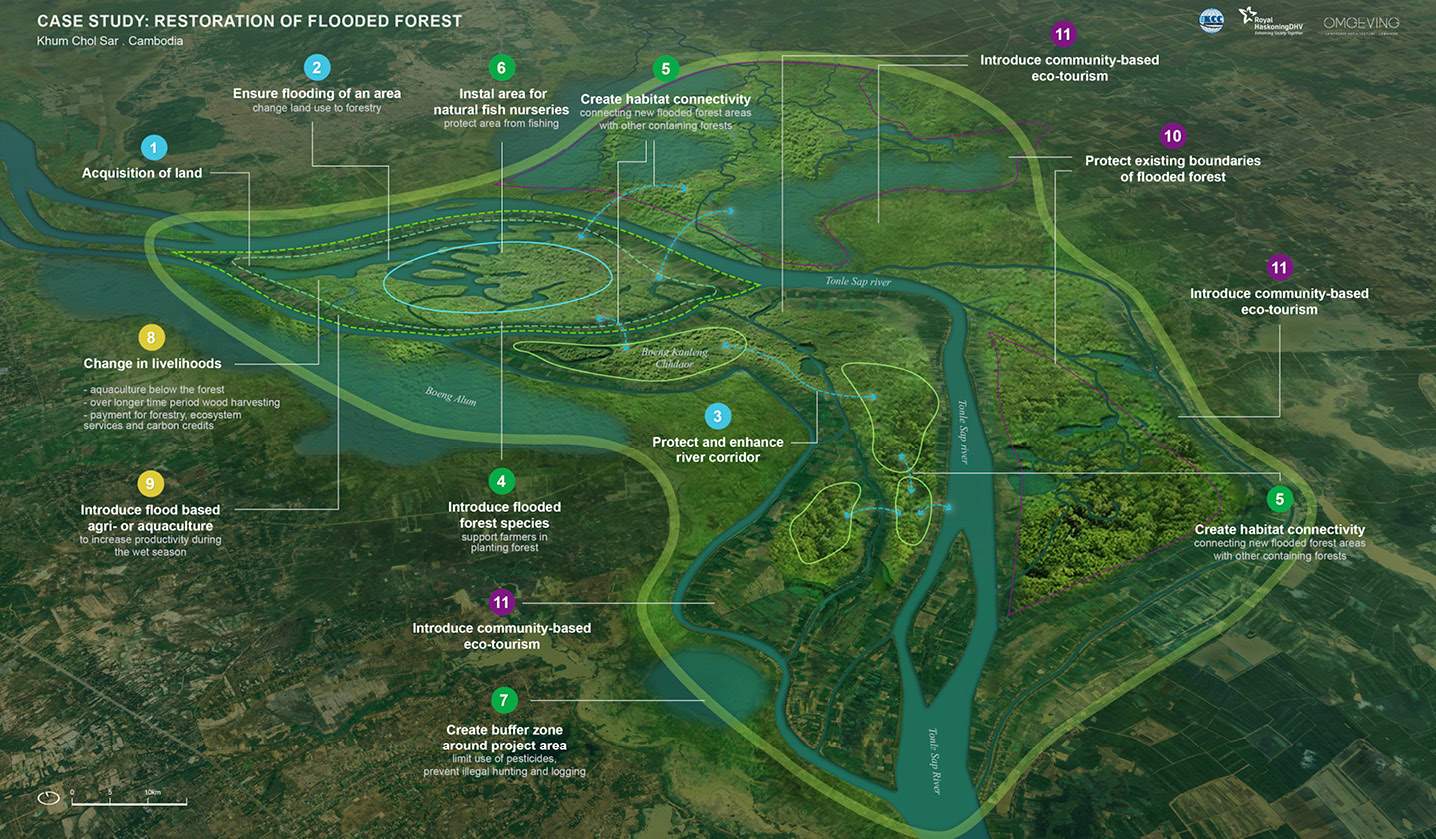Potential NbS measures
This case study area is located in Kampong Chhnang province, covering flooded forests along the Tonle Sap River, which connects the Mekong River with the Tonle Sap Lake. The area could be restored and protected by land acquisition, reconnecting low-lying areas, connecting habitats, protecting and restoring river corridors, and providing alternative livelihoods for farmers. Socio-economic actions are especially challenging in this complex social environment where people are very poor, and governance and enforcement of laws and regulations are weak. The main activities here would be to reduce further encroachment of the existing flooded forest, restore flooded forest where possible, and adjust livelihoods to guarantee a stable income.
Therefore, the main measures related to this case include purchasing land that is already capable of flooding 6-8 months a year (1 & 2 in the figure above) so that with some planting efforts, the area can be reforested (4). Furthermore, the protection and enhancement of connections between existing patches of flooded forest (3) is considered an important measure. Those measures could be further enhanced with biodiversity measures, such as installing a buffer zone around the area, in which the use of pesticides and illegal logging are prohibited (7). Besides, habitat connectivity can be improved and maintained around forest areas (5). After all, the flooded forest facilitates the exchange of water, nutrients, and sediments between the river and the floodplain, supporting the ecosystem health. To increase fish stock and fish respawning, it is recommended to install zones designated for natural fish nurseries (6): the submerged vegetation and complex structure of the forest provide shelter and food resources for juvenile fish, contributing to the overall productivity of the aquatic ecosystem.
The changes in land use also necessitate a shift in livelihoods, where agricultural activities transition to aquaculture beneath the flooded forest, wood harvesting over longer periods, and/or payment for ecosystem services (8). Although these changes may require further investigation, a case study in Vietnam has shown that flood-based agriculture or aquaculture can increase productivity during the wet season (9). This can partially compensate for the loss of income due to declining fish catches and reduced agricultural productivity, as well as the conversion of land from agriculture back to flooded forest. Further community-based activities include protecting the existing boundaries of the flooded forest (10), and there may also be opportunities for eco-tourism in the area (11).
